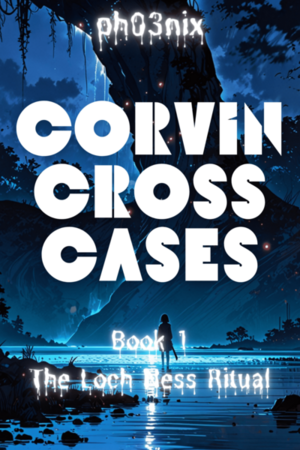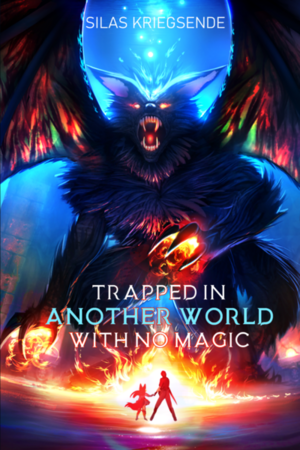Chapter 2:
Summons to the Loch
Corvin Cross Cases [Book 1 : The Loch Ness Ritual]
The email was a masterpiece of sterile, legalistic prose, a stark contrast to the hysterical pleas and rambling conspiracy theories that usually filled his inbox. Corvin read it aloud, his voice a low murmur in the quiet office, a habit he’d developed to better process information.
“‘Dear Mr. Cross,’” he began, a faint smirk playing on his lips at the formality. ‘We write to you on behalf of our client, who wishes to remain anonymous at this juncture.’ Of course they do. Everyone’s a ghost until the invoice is due.”
His eyes scanned down, picking out the key phrases, his tone shifting from sarcastic to analytical.
‘Our client is the majority stakeholder in a significant private estate on the shores of Loch Ness…’ Money. Old money, by the sound of it.
‘…deeply concerned regarding a series of unusual and unsettling events occurring on the property and the adjacent loch…’ “Unusual and unsettling,” he repeated, his voice dry. “Vague. Purposefully so. Creates mystery without committing to a specific claim.”
‘…local constabulary and naturalists have been consulted. Their official stance is one of dismissal, attributing the reports to…’ Corvin’s voice took on a mocking, officious tone as he quoted the email, ‘…“atmospheric conditions, local wildlife, and superstitious nonsense.”’
He leaned back, steepling his fingers. “So the locals think it’s rubbish. But the rich man who owns the land isn’t satisfied. He doesn’t want a ghost hunter. He wants a rationalist.” A flare of professional pride ignited within him. They hadn’t called some TV psychic; they’d called him.
Then he reached the final line, and his financial pragmatism overrode everything else.
‘A retainer of twenty-five thousand pounds has been wired to your account, as per the details below, with a further seventy-five payable upon the satisfactory conclusion of your investigation. We require absolute discretion.’
A low whistle escaped his lips. One hundred thousand pounds. For a weekend’s work at a Scottish tourist trap. It was an obscene amount of money. It was a challenge.
“Loch Ness,” he said to the empty room, the words hanging in the air. He could almost hear the swell of dramatic bagpipe music and the obligatory sound of a fake monster roar. “Let me guess. A plesiosaur with a taste for tourists? A log that’s learned to swim in a particularly menacing pattern?”
His internal monologue, usually a rapid-fire stream of data and deduction, shifted into a higher gear. The biggest myth set-up in the British Isles. The ultimate stage. The exposure from this alone would be worth triple the fee. Book deals. Speaking tours. The Grant-Lennox name attached to it… impeccable credibility. They’re not just paying for an investigation; they’re paying for the prestige of my conclusion.
He loved this. He adored it. The bigger the legend, the more fervent the belief, the more satisfying it was to reduce it to its component parts. To show the intricate clockwork of deception and delusion behind the curtain of the supernatural. This is going to more of crusade than a job. His decision was made before he’d even finished the thought. He hit ‘Reply,’ his fingers flying across the keyboard.
‘Messrs. Drummond & Associates,’ he typed, his prose crisp and efficient. ‘Your terms are acceptable. I am en route. Expect my arrival by evening. Discretion is assured. Corvin Cross.’
He sent it and was moving before the sent confirmation appeared.
The transition from contemplative analyst to man of action was instantaneous. The cluttered office became a map of efficient motion. He grabbed his pre-packed go-bag from its place by the door—a rugged, waterproof duffel containing a change of clothes, toiletries, and his most essential tech. He then turned to a large, hard-shell Pelican case on a wheeled stand. This was his arsenal.
He flipped the latches. The interior was a grid of custom-cut foam, a museum of rationalism. Nestled within were his tools: a high-sensitivity electromagnetic frequency (EMF) meter that could pinpoint a faulty wire from fifty feet, a thermal imaging camera, a full-spectrum digital recorder, a high-powered lithium-ion spotlight, water sampling kits, a drone with multispectral imaging capabilities, and a smaller case filled with lenses, filters, and every adapter known to man. It was the toolkit of a myth-buster.
He did a visual inventory, his mind already on the road. Check. Check. Check. All charged. All calibrated.
Fifteen minutes after reading the email, he was wheeling the case out of his office, locking the door behind him. The city of Edinburgh, usually a source of comfort with its Enlightenment history and orderly streets, now felt like a cage. The real puzzle was out there, in the mist.
He loaded the case into the boot of his car—a sleek, black Audi that spoke of success but not ostentation—and slid into the driver’s seat. The engine purred to life, a sound of modern certainty.
The sat-nav was already set. Loch Ness, Scottish Highlands.
The city began to unravel around him. The Georgian sandstone of New Town gave way to the more spread-out suburbs, which then melted into the green belt. The sky, which had been a flat grey over Edinburgh, began to break up into something more dramatic as he crossed the bridge over the Firth of Forth and pointed the car north.
The landscape began to change, to breathe. The gentle hills sharpened into formidable shapes. Patches of mist clung to the valleys like discarded cotton wool. The trees grew more sparse, more wind-sculpted. Stone walls crisscrossed the rugged terrain, and the sky lowered, becoming a vast, brooding ceiling of shifting cloud and light.
He drove for hours, the Audi eating up the miles of winding A-roads. His internal monologue was a running commentary, a blend of analysis and dismissal.
Patchy fog. Perfect for obscuring details, creating false shapes. Low-pressure system moving in. Explains the headache the client probably mistook for ‘spiritual pressure.’ Peat-stained water. Reduces visibility to inches. Ideal conditions for a hoax. The entire loch is a stage, and every tourist with a camera is a willing extra in the play.
He passed signs for tourist attractions: Nessieland!, The Original Loch Ness Exhibition, Monster Boat Tours. Each one made his lip curl slightly. The industry of belief was thriving.
As he descended a final hill toward the great glacial rift that held the loch, the full spectacle unveiled itself. The water was a sheet of dark, leaden glass, impossibly long, squeezed between steep, pine-clad slopes. The mist was thicker here, coiling on the surface of the water and snaking through the trees on the far shore. It was a vista of profound scale and profound gloom.
The loch looked hungry. The shadows stretching across its surface seemed like deep, cold bruises. The silence here was different from his office—it was a vast, waiting silence, broken only by the cry of a lone bird that sounded more like a warning than a call.
“Anthropomorphic fallacy,” Corvin stated firmly, gripping the wheel. “It’s a body of water. A large, cold, deep body of water with a high sediment load. Its only malevolent intent is to give you hypothermia if you’re stupid enough to fall in.” He was almost sure.
He followed the sat-nav’s instructions, turning off the main road onto a narrower, private drive marked by a discreet stone gatepost. The road twisted down toward the shore, lined with ancient, dripping rhododendron bushes that clawed at the car. And then he saw it. The house. The client’s ‘significant private estate.’
It was a baronial manor of dark Scottish stone, a Victorian confection of turrets, crow-step gables, and mullioned windows that overlooked the loch. Lights glowed in a few of the windows, doing little to cheer the place, instead making the surrounding darkness seem deeper and more complete.
Corvin brought the car to a stop on the gravel sweep. He killed the engine. The silence rushed back in, heavier than before. He sat for a moment, looking up at the brooding edifice. A perfect piece of Gothic stagecraft.
“Right,” he said to himself, his voice the only modern thing in the ancient quiet. “Let’s see what we’re all afraid of.”




Please sign in to leave a comment.